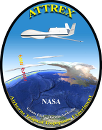Small changes in stratospheric water vapor have significant impacts on climate despite having a lower concentration in the atmosphere than greenhouse gases. Understanding the rate at which stratospheric water vapor enters the stratosphere and the rate at which it changes is crucial to understanding how climate in the stratosphere affects the lower atmosphere. The Airborne Tropical TRopopause EXperiment (ATTREX) investigated the atmospheric processes of stratospheric water vapor creation, movement, and deposition through the tropical tropopause. The tropical tropopause is a key area in the study of stratospheric water vapor as it controls the composition of the stratosphere. Researching the controls behind stratospheric humidity is important to improving modeling accuracy in order to predict future climate patterns. Prior to ATTREX, although global modeling accurately represented tropospheric water vapor climate feedback, a lack of understanding surrounded the physical processes controlling the tropical tropopause layer. This lack of understanding caused uncertainty in predictions of future changes in stratospheric humidity and stratospheric ozone. ATTREX addressed these gaps in knowledge to improve climate modeling.
ATTREX investigated how the exchange of stratospheric water vapor in the tropopause impacted atmospheric composition and chemistry, and it delved into the long-term impacts on climate of this exchange. ATTREX addressed three science objectives: first, the role of stratospheric water vapor in Earth’s energy budget and climate; second, the dehydration of tropospheric air entering the stratosphere; and third, the physical processes and chemical composition of the Tropical Tropopause Layer (TTL).
Field deployments for ATTREX were conducted in California and Guam from 2011-2014. NASA’s Northrup Grumman Global Hawk was used to collect ATTREX data. This unmanned aircraft is intended for high-altitude, long-duration missions. Equipped with an extensive suite of instruments, the Global Hawk flew at high altitudes to obtain measurements such as trace gas mixing ratio, radiation flux, cloud properties, and meteorological parameters.
Disciplines: Field Campaigns
| Collection | Disciplines | Spatial | Temporal |
|---|---|---|---|
|
ATTREX-Aircraft_insitu_Cloud_property_Measurements_1
ATTREX-Aircraft_insitu_Cloud_property_Measurements |
Clouds |
Spatial Coverage: (S: -90, N: 90), (W: -180, E: 180) |
Temporal Coverage: 2011-10-01 - 2013-03-01 |
|
ATTREX-Aircraft_insitu_TraceGas_Measurements_1
ATTREX-Aircraft_insitu_TraceGas_Measurements |
Field Campaigns |
Spatial Coverage: (S: -90, N: 90), (W: -180, E: 180) |
Temporal Coverage: 2011-10-01 - 2013-03-01 |
|
ATTREX-Aircraft_navigational_and_meteorological_Measurements_1
ATTREX-Aircraft_navigational_and_meteorological_Measurements |
Field Campaigns |
Spatial Coverage: (S: -90, N: 90), (W: -180, E: 180) |
Temporal Coverage: 2011-10-01 - 2013-03-01 |
|
ATTREX-Aircraft_Radiation_Measurements_1
ATTREX-Aircraft_Radiation_Measurements |
Radiation Budget |
Spatial Coverage: (S: -90, N: 90), (W: -180, E: 180) |
Temporal Coverage: 2011-10-01 - 2013-03-01 |
|
ATTREX-Aircraft_RemoteSensing_Temperature_Measurements_1
ATTREX-Aircraft_RemoteSensing_Temperature_Measurements |
Field Campaigns |
Spatial Coverage: (S: -90, N: 90), (W: -180, E: 180) |
Temporal Coverage: 2011-10-01 - 2013-03-01 |
